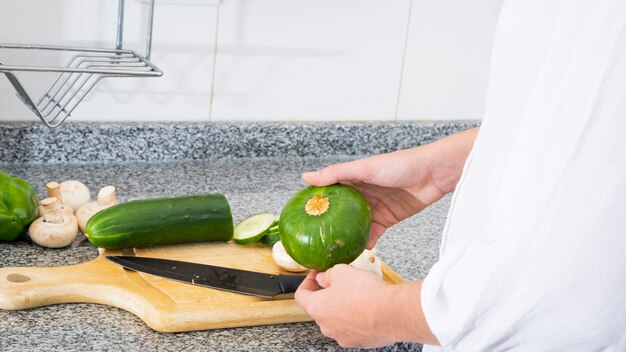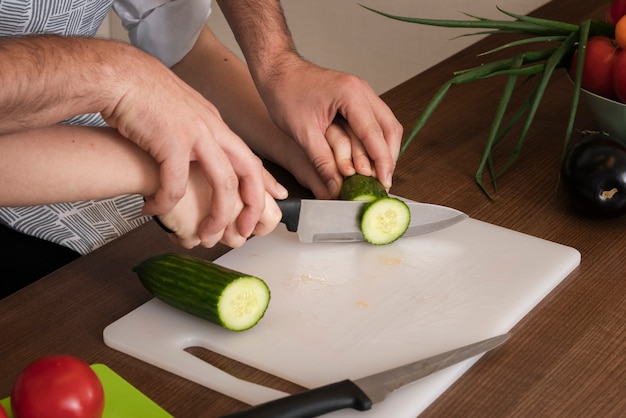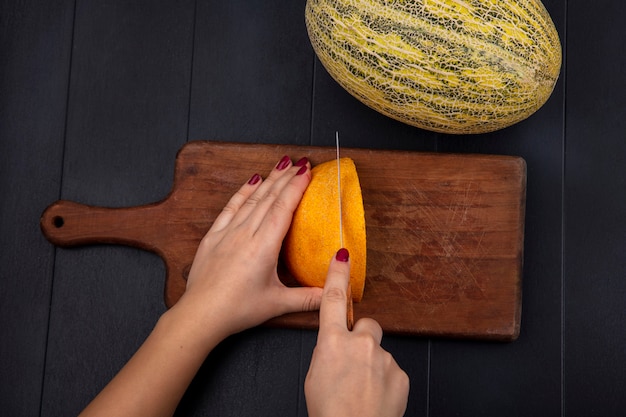I'll be honest, I’m a bit obsessed with squash. It’s one of those vegetables that feels so versatile and comforting, whether you’re roasting it alongside a roast chicken or using it to make a creamy soup. But let’s face it, the one question that always seems to crop up is: how long do I cook this thing for?
There’s a good reason for the confusion, too. Each squash is unique, with its own size, shape, and thickness of flesh, all influencing how long it takes to cook. So, let’s dive into this squash-cooking journey together and discover how to ensure perfectly cooked, tender squash every single time.
(Part 1) Understanding the Squash Family: A Beginner's Guide

The first step to mastering squash cooking is understanding the different types of squash. There are essentially two main categories, each with their own quirks:
summer squash:
These are the thin-skinned, tender beauties that are typically eaten when young and immature. They’re usually ready to eat after a short cooking time and add a delicate sweetness to dishes. Think zucchini, yellow squash, and pattypan squash, all of which feel perfect for quick sautés and stir-fries.
Winter Squash:
Now, these guys are the heavyweights, boasting thick skin and dense flesh. They’re harvested in the fall and stored for months, meaning they need a longer cooking time to reach that melt-in-your-mouth tenderness. Think butternut squash, acorn squash, spaghetti squash, and even pumpkin (yes, pumpkin is a type of winter squash!).
(Part 2) Cooking Methods: Choosing the Right Technique

Once you’ve identified your squash type, it’s time to pick your weapon of choice – the cooking method. Each one brings its own unique flavour and texture to the table:
Roasting:
This is my absolute favourite method for squash, and for good reason. The high heat brings out the natural sweetness and creates a gloriously caramelized flavour. I usually cut the squash in half, scoop out the seeds, drizzle with olive oil, and season generously with salt and pepper. Then, I roast it face down in a baking dish, letting the intense heat work its magic.
Boiling:
Boiling is a simple and efficient method for those who want to use the squash in soups, stews, or even to make a squash puree. Simply cut the squash into chunks, add it to a pot of boiling water, and cook until tender. The boiling method preserves the squash’s natural flavour while allowing it to soften perfectly.
Microwaving:
This is a quick and convenient option for smaller squashes like zucchini or yellow squash. Just pierce a few holes in the squash, microwave it on high for a few minutes, and then check for doneness. Microwaving is ideal for those nights when you need a quick and easy side dish.
Steaming:
For a more delicate texture and flavour, steaming is a great option. Simply place the squash pieces in a steamer basket over boiling water and cook until tender. Steaming helps to retain the nutrients and colours of the squash, making it a healthy and delicious choice.
(Part 3) The Key to Squash Perfection: The Fork Test

No matter which cooking method you choose, the key to success lies in cooking the squash until it reaches that perfect point of tenderness. The best way to determine if it's ready is with the trusty fork test: simply pierce the flesh of the squash with a fork. If it goes through easily, without any resistance, then your squash is ready to be enjoyed.
(Part 4) Cooking Times: A Guide to Squash Success
Now, let’s get down to the nitty-gritty: the cooking times. Keep in mind that these are just general guidelines, and the actual time may vary depending on the size, thickness, and even the variety of the squash you’re working with.
Summer Squash:
Zucchini: 5-10 minutes (boiling), 15-20 minutes (roasting)
Yellow Squash: 5-10 minutes (boiling), 15-20 minutes (roasting)
Pattypan: 5-10 minutes (boiling), 15-20 minutes (roasting)
Winter Squash:
Butternut Squash: 30-45 minutes (boiling), 45-60 minutes (roasting)
Acorn Squash: 30-45 minutes (boiling), 45-60 minutes (roasting)
Spaghetti Squash: 30-45 minutes (boiling), 45-60 minutes (roasting)
Pumpkin: 45-60 minutes (boiling), 60-75 minutes (roasting)
(Part 5) Tips and Tricks for Perfectly Cooked Squash:
Size Matters: Smaller squashes will cook faster than their larger counterparts, so adjust the cooking time accordingly.
Evenly Cut: Cut your squash into pieces of roughly the same size to ensure that everything cooks evenly. Imagine a symphony of perfectly cooked squash pieces, all reaching peak tenderness at the same time.
Space Out: Give your squash some breathing room. Don't overcrowd the pan or baking dish, as this can hinder even cooking and lead to soggy squash.
The Power of Foil: Cover your baking dish with foil for the first half of the cooking time to create a steamy environment, encouraging the squash to cook through more quickly.
Keep an Eye Out: Check your squash regularly throughout the cooking process, especially in the beginning. This will help you avoid overcooking and ensure that you capture that perfect balance of tenderness and flavour.
(Part 6) Storing Squash: Making the Most of Your Harvest
Uncut winter squash can be stored in a cool, dry place for several months. Just make sure there are no bruises or soft spots, and choose a spot that's not too humid. Once cut, store the squash in the refrigerator for up to 3 days, wrapped tightly in plastic wrap or stored in an airtight container.
(Part 7) squash recipes: A culinary adventure
Now for the fun part - the recipes! Let's explore some delicious ways to showcase the versatility of squash:
roasted squash with Sage and Brown Butter:
This simple and elegant dish is perfect for a weeknight dinner or a special occasion. Simply toss your favourite squash with olive oil, fresh sage leaves, salt, and pepper, and roast until tender. Drizzle with fragrant brown butter for an extra touch of decadence and serve with a sprinkle of toasted nuts for a crunchy contrast.
squash soup with Ginger and Coconut Milk:
This creamy and flavourful soup is both comforting and healthy, ideal for a cold winter day. Roast the squash until tender, then blend it with fresh ginger, coconut milk, and vegetable broth for a velvety smooth soup. You can also add a touch of lime juice or a pinch of cayenne pepper for a subtle kick.
Stuffed Squash with Sausage and Spinach:
This hearty and satisfying dish is perfect for a cold winter night, offering a delicious blend of textures and flavours. Cut the squash in half, scoop out the seeds, and fill it with a mixture of browned sausage, fresh spinach, and your favourite cheese. Roast until the squash is tender and the filling is bubbling, and enjoy.
Squash Bread:
This moist and flavorful bread is a great way to use up leftover squash. You can find numerous recipes online that vary the flavour with spices such as cinnamon, nutmeg, or ginger. Serve it warm with a pat of butter or a dollop of cream cheese for a truly indulgent treat.
Squash Noodles:
Spaghetti squash gets its name because its flesh separates into strands that resemble spaghetti. You can use it in all sorts of pasta dishes, from simple tomato sauce to creamy carbonara. The delicate strands absorb the sauce beautifully, offering a lighter and more nutritious alternative to traditional pasta.
Squash Fritters:
These crispy and delicious fritters are a great way to use up leftover squash. Simply grate the squash, mix it with flour, eggs, and spices, then fry until golden brown. Serve them with a dollop of sour cream or a refreshing yogurt dip for a delightful appetizer or side dish.
(Part 8) Beyond the Basics: Expanding Your Squash Horizons
There are so many other ways to enjoy squash, beyond the traditional methods. Here are a few ideas to spark your culinary creativity:
Squash Risotto: The creamy, nutty flavour of butternut squash makes it a perfect addition to risotto. Simply stir the roasted squash into your risotto during the last few minutes of cooking for a luscious and comforting dish.
Squash Pizza: Think beyond the traditional toppings and try adding roasted squash to your pizza. The sweetness of the squash pairs beautifully with salty cheeses and savoury toppings like sausage or bacon.
Squash Muffins: Add grated squash to your favourite muffin recipe for a touch of sweetness and moisture. Experiment with different spices, nuts, and dried fruits to create your own unique flavour combinations.
Squash Pancakes: For a delicious and healthy breakfast, try making pancakes with grated squash. The squash adds a subtle sweetness and a beautiful golden hue to your pancakes.
(Part 9) My Favourite Squash Experiences: A culinary journey
One of my fondest memories involving squash is from a trip to Italy. I was staying in a small village in Tuscany, and the local market was overflowing with fresh, colorful produce. Amongst the tomatoes and artichokes, I spotted a beautiful butternut squash, the size of a small pumpkin. I couldn't resist buying it, and that evening, I roasted it with rosemary and garlic. The flavour was incredible, and the aroma filled the whole house. It was a simple meal, but it was one of the most delicious things I've ever eaten. That's the magic of squash, isn't it? It's simple, yet incredibly versatile, and capable of creating culinary magic.
(Part 10) FAQs: Solving Your Squash Questions
1. How do I know if my squash is ripe?
A ripe squash will feel heavy for its size, with a slightly firm but not hard texture. The stem should be dry and brown. Avoid squash with any soft spots, bruises, or cuts, as these are signs of spoilage.
2. Can I eat the seeds?
Absolutely! Squash seeds are a great source of protein and healthy fats. You can roast them like pumpkin seeds, tossing them with olive oil, salt, and pepper, for a crunchy and flavourful snack. Or, you can use them to make a delicious pesto, blending them with fresh herbs, garlic, and Parmesan cheese.
3. What if my squash is too big to fit in the oven?
No problem! You can cut it into smaller pieces, or even roast it in two separate pans. Just make sure to give the pieces enough space to cook evenly, and be sure to check for doneness more frequently.
4. How can I make my squash sweeter?
A little bit of sugar or honey can help to bring out the natural sweetness of your squash. You can also try adding a pinch of cinnamon or nutmeg, as their warmth complements the squash's sweetness beautifully.
5. What are some good side dishes for squash?
Squash pairs well with so many dishes! Some of my favourites include roasted chicken, pork chops, and salmon. It also makes a wonderful accompaniment to a simple salad or a hearty grain bowl.
There you have it, my friends. Now you have all the knowledge you need to cook squash like a pro. So go forth, experiment, and enjoy! And if you have any questions, don't hesitate to ask. I'm always happy to share my squash wisdom.
Everyone is watching

How to Cook Frozen Lobster Tails Perfectly: A Step-by-Step Guide
RecipesLobster. Just the word conjures up images of lavish meals, special occasions, and a taste of luxury. But let's...

Pigs in a Blanket Cooking Time: How Long to Bake for Perfect Results
RecipesAh, pigs in a blanket. Just the name conjures up images of those delightful little parcels of crispy pastry en...

Pork Fillet Cooking Time: How Long to Cook It Perfectly
RecipesPork fillet, or tenderloin as it's sometimes called, is a real favourite in our house. It's so versatile, and...

The Ultimate Guide to Tender, Juicy Pulled Pork
RecipesRight, let's talk pulled pork. It's one of those dishes that just screams "comfort food," doesn't it? I mean...

The Ultimate Guide to Cooking Sweet Potatoes: From Roasting to Mashing
RecipesSweet potatoes. Just the name conjures up images of warm, comforting dishes, bursts of vibrant color, and a to...
